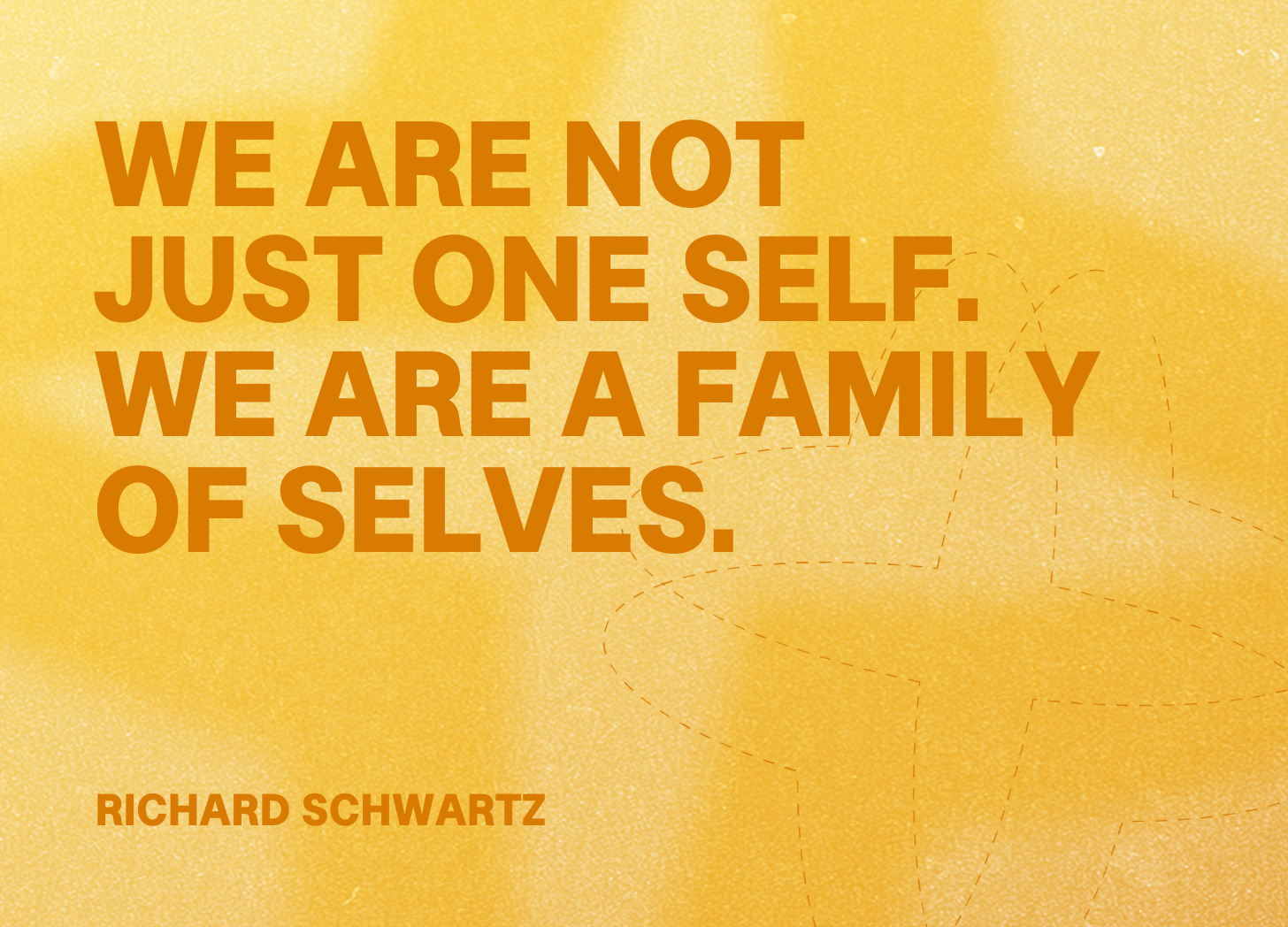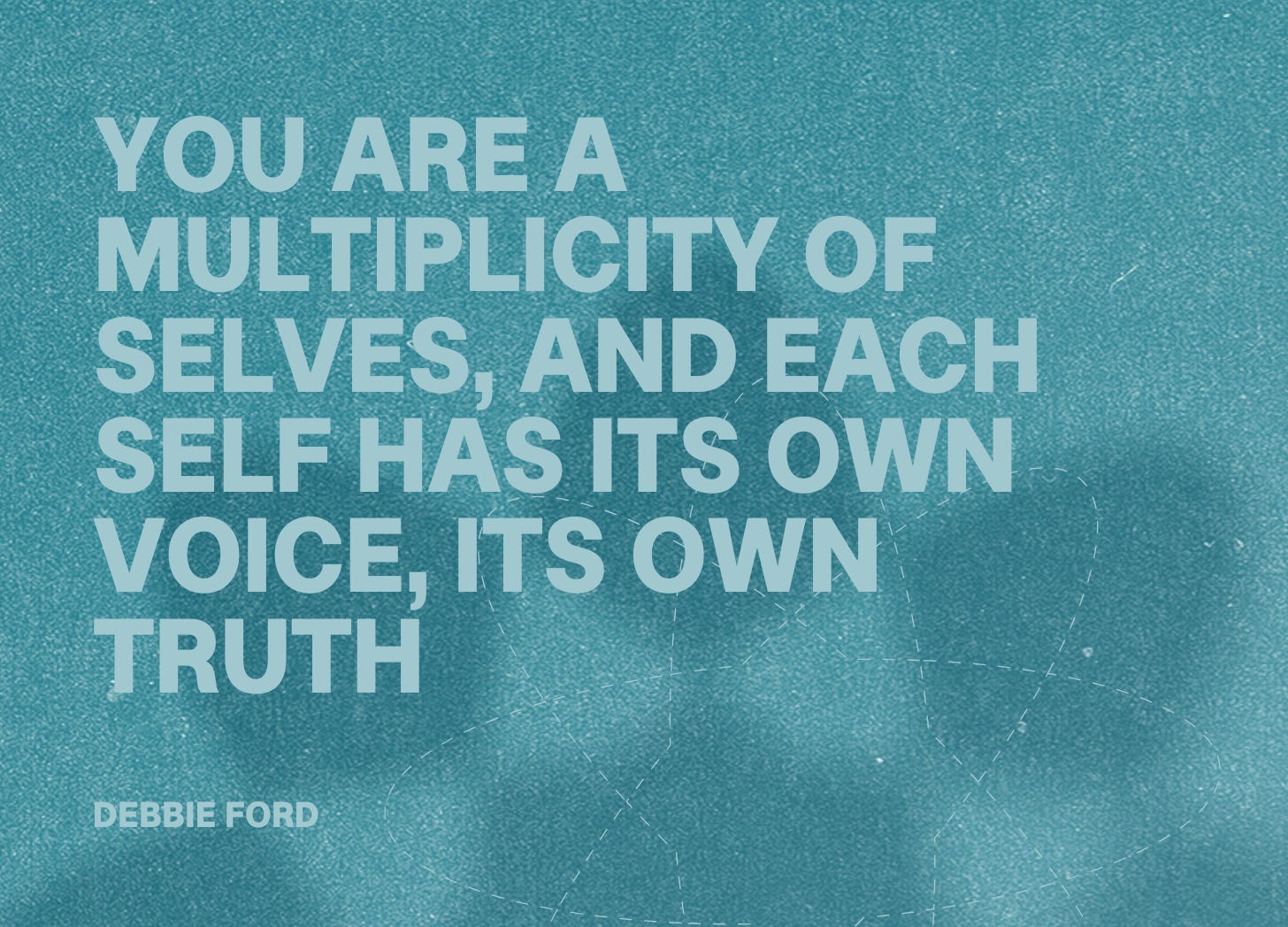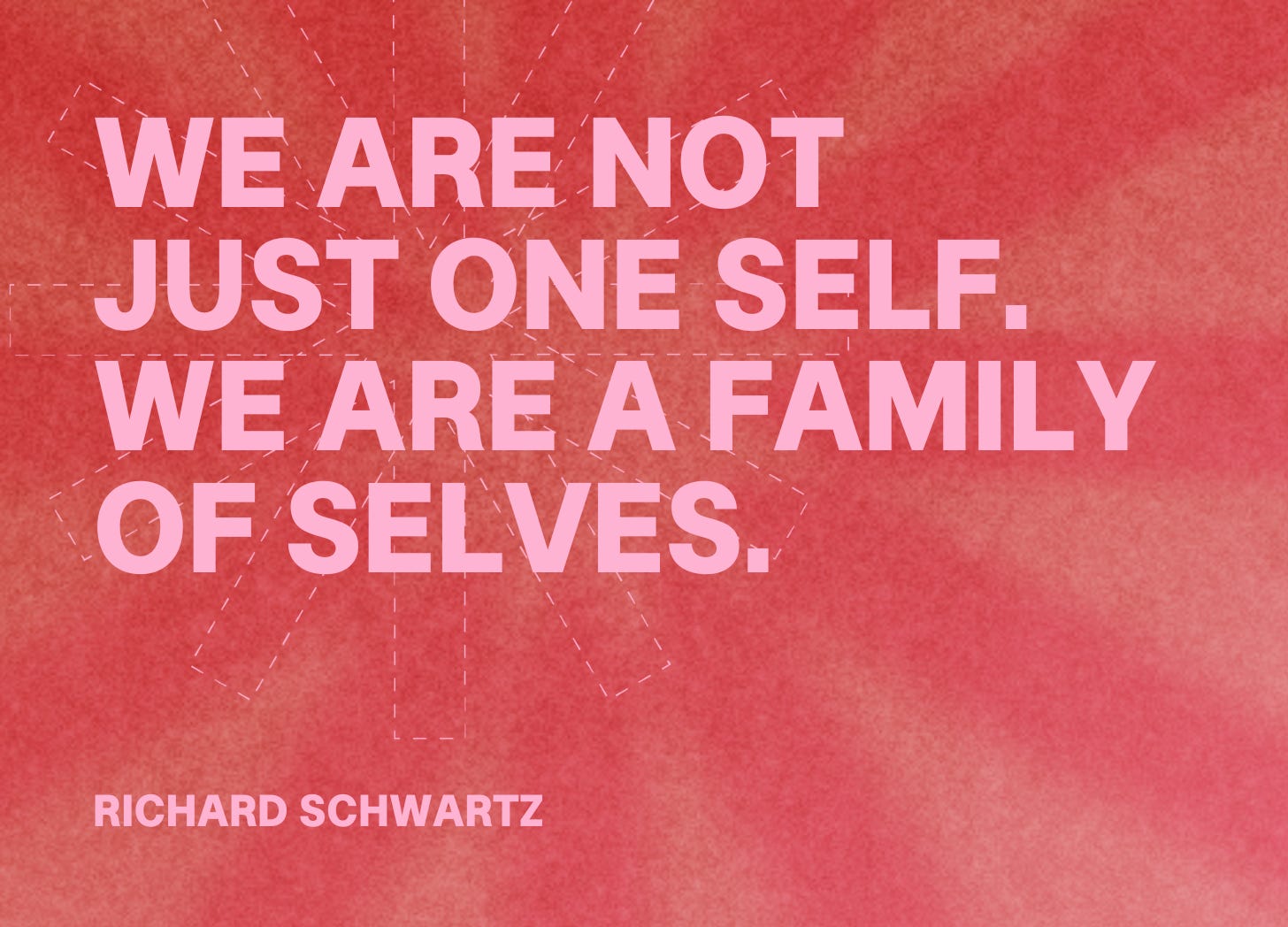Parts work 101
Introduction to Shadow Work - Part 5
Thanks for being here. This is the fifth lesson in your free Introduction to Shadow Work course. If you have landed here without reading the previous lessons, I recommend you start from the beginning. Subscribe below, and I’ll send you links to all the lessons in the course.
Have you ever noticed that you can feel multiple things simultaneously? That part of you wants to speak up while another part wants to hide? Can you feel confident and insecure, loving and resentful, excited and terrified - all at once?
Maybe you've experienced an internal dialogue that goes something like this one:
"I should ask for that promotion."
"No, that's too risky. What if they say no?"
"But I deserve it. I've worked hard."
"Don't be greedy. You should be grateful for what you have."
"Why can't I just go for what I want?"
Or perhaps you've felt conflicts like this:
Part of you desperately wants love and connection, while another part pushes people away the moment they get close.
Part of you craves adventure and freedom, while another part needs safety and control.
Part of you wants to shine and be seen, while another part wants to hide and stay invisible.
If you've ever felt like you're having an argument with yourself, congratulations - you're completely normal. And today we're going to talk about why.
What is parts work?
Parts work in therapy is based on a simple but revolutionary idea: You are not just one unified self. You are a family of selves.
Think of your psyche like a household with different family members living inside. Each "part" has its own personality, needs, and way of trying to help you survive and thrive.
Some parts are young and wounded. Some are protective and fierce. Some are wise and calm. Some are playful and creative. Some are anxious and controlling. Some are angry and rebellious.
Every part of you exists for a good reason, even the ones you don't like.
This doesn’t mean you have “multiple personalities”. It’s just a recognition of the natural multiplicity of human consciousness. We all have different parts. It’s just that we often don't pay attention to them.
The three types of parts
In Internal Family Systems (IFS) therapy, developed by Dr. Richard Schwartz, there are three main types of parts:
1. Exiled Parts (The Wounded Children) These are the parts that carry your pain, trauma, and unmet needs. They're often young and vulnerable and hold your deepest hurts. They want to be seen, heard, and healed, but they've been "exiled" because their pain feels too much to handle.
Examples: The part that feels abandoned, the part that carries shame, the part that feels not good enough, the part that craves love and attention.
2. Protector Parts (The Guardians) These parts developed to keep you safe and ensure your needs are met. They learned strategies to protect you from further harm and to help you function in the world.
Examples: The perfectionist (protects from criticism), the people-pleaser (protects from rejection), the achiever (protects from feeling worthless), the controller (protects from chaos).
3. Firefighter Parts (The Crisis Managers) These parts show up when protectors can't keep the exiled parts' pain at bay. They use more extreme strategies to numb, distract, or escape from overwhelming feelings.
Examples: The part that binge eats, drinks, shops, or works compulsively when emotions feel too much to handle.
Understanding your parts is like having a map of your inner world.
How this relates to shadow work
Remember how we talked about splitting parts of ourselves off in childhood? Those split-off parts didn't disappear. They became exiled parts in your internal system.
The anger you weren't allowed to express became an exiled part carrying rage and the need for boundaries. The sadness you had to hide became an exiled part holding grief and the need for comfort. The joy you were told was "too much" became an exiled part, carrying your aliveness and spontaneity.
And protector parts were developed to make sure those exiled parts stayed hidden.
If expressing anger got you rejected, a protector part learned to be extra nice and accommodating. If showing sadness made others uncomfortable, a protector part learned to be strong and independent. If your joy was too much, a protector part learned to be serious and contained.
Your protector parts aren't the enemy - they're trying to keep your wounded parts safe.
Why parts fight each other
Now you can understand why you feel conflicted so often. Your parts have different agendas:
The exiled part that was hurt in relationships wants love and connection. The protector part that learned relationships are dangerous wants to stay safe and alone.
The exiled part that holds your dreams wants to take risks and go after what you want. The protector part that learned failure was shameful wants to play it safe and avoid disappointment.
The exiled part that carries your authentic self wants to be seen and express freely. The protector part that learned authenticity was dangerous wants to maintain the mask and stay hidden.
Internal conflict can be challenging and keep us stuck. However isn't a sign that something's wrong with you. It’s the normal process of different parts of you having different needs.
In shadow work, we talk to, and from these parts. This can bring real insight and healing. It’s a different approach from talking about the parts, which is often what happens in conventional talking therapy.
The Self: your inner leader
But here's the beautiful thing: underneath all these parts is what IFS calls the "Self" - your core essence that is calm, curious, compassionate, and connected.
Your Self is the wise, loving adult who can hold space for all your parts.
When you're in Self, you don't try to get rid of parts you don't like. Instead, you get curious about them. You listen to their concerns. You thank them for trying to protect you. You help them find new roles that serve you better.
Healing happens when your Self becomes the loving parent to all your parts.
Think of it like this: instead of being hijacked by whichever part is loudest, you become the gentle but firm leader of your internal system.
You can acknowledge the scared part without letting it make all your decisions. You can appreciate the angry part without letting it burn down your life. You can comfort the sad part without drowning in its pain.
How to start working with your parts
1. Acknowledge. Realising you are made up of parts is already a liberating power move. Understanding that you are not your shame, your anger, or your grief, and that these are just parts of you, is already an empowering position from which to view yourself.
2. Notice. Start paying attention to when you feel internal conflict or strong emotions. Ask yourself: "What part of me is feeling this way?"
2. Question. Approach your parts with curiosity and compassion. Instead of judging the parts you don't like, or worse, judging yourself for having those parts in the first place, try to understand them, with gentle, loving care for them, and yourself. Ask: "How is this part trying to help me? What is it protecting me from?"
3. Listen. Each part has wisdom and important information. The anxious part knows what you need to feel safe. The angry part knows what boundaries you need. The sad part knows what losses need to be grieved.
Every part deserves to be heard, even the ones that seem destructive.
Your parts work practice this week
Here's a gentle way to start getting to know your internal family:
When you notice internal conflict, pause and ask:
What different parts of me are speaking right now?
What does each part want or need?
What is each part trying to protect me from?
How can I honour both parties' concerns?
Example: Conflict: Part of me wants to apply for a new job, but part of me is terrified.
Curious inquiry: The excited part wants growth and challenge. The scared part wants security and safety. Both parts have valid concerns. How can I honour both by taking calculated risks with good preparation?
Your goal here isn't to eliminate parts - it's to help them work together as a team.
A note on going slowly
As you start noticing your parts, you might feel overwhelmed by how many voices are in your head. This is normal. You've always had these parts - you're just becoming conscious of them now.
Go slowly. You don't need to understand everything at once.
If you notice parts that carry intense pain or trauma, be especially gentle. These parts have been protecting themselves for good reasons. They need safety and trust before they'll share their stories.
Your parts have been waiting your whole life for you to turn toward them with love instead of judgment.
In tomorrow’s lesson, we're going to meet one of your most important parts: your inner child. We'll explore how to reconnect with the young part of you that holds both your deepest wounds and your most authentic joy.
Understanding that your inner child is just one part of your internal family, not your entire identity, makes this work much more manageable and less overwhelming.
You are not broken. You are not too much. You are a beautifully complex human being with different parts that all deserve love and understanding.
Welcome to your inner family. They've been waiting for you.
Stay curious.
P.S. If exploring your parts brings up intense emotions or memories, please go slowly. This work is about gentle awareness, not overwhelming yourself. If you feel flooded or disconnected, take a break and seek professional support if needed.
Remember: The goal isn't to fix or change your parts - it's to develop a loving relationship with all of them.






This really helps to understand inner-conflict. We all have them but no one ever really explains it like this. So helpful and enlightening